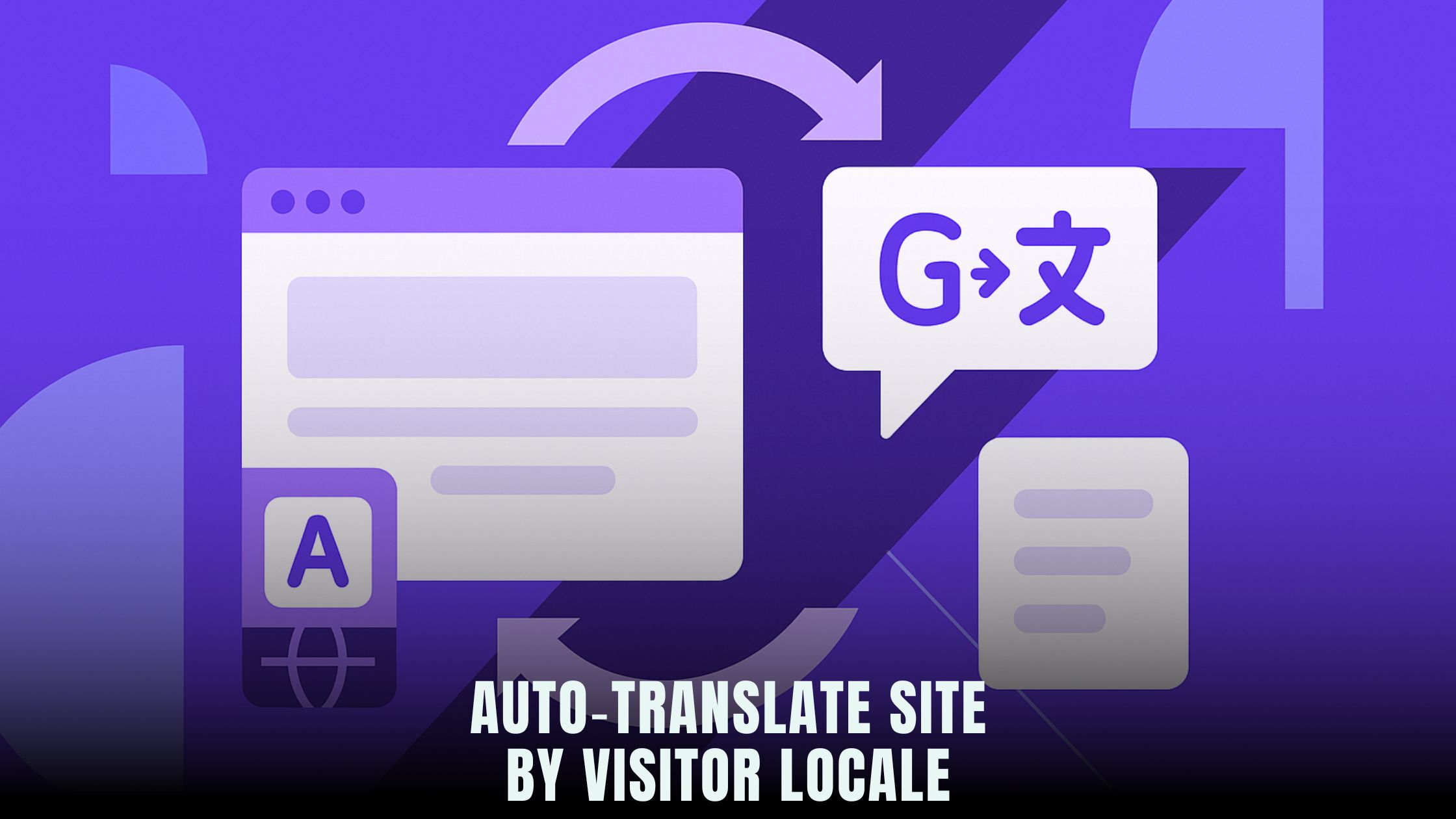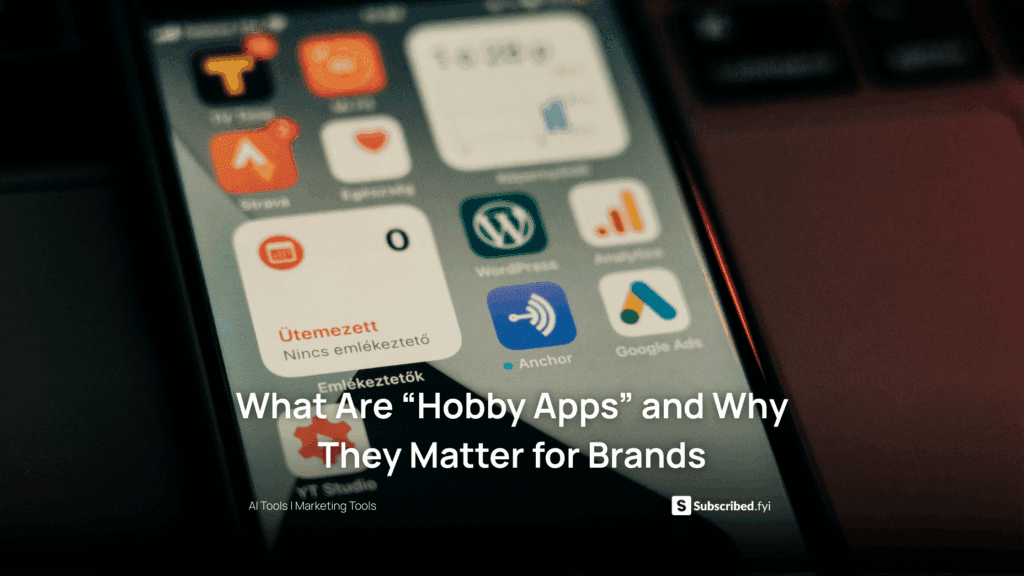Can You Auto‑Translate Your Site Based on Visitor Locale?
- WebOps Platforms Bug Tracking & Feedback Software Web Development & Design Website Builder


When global visitors land on your website, serving content in their native language instantly boosts engagement and trust. AI-driven no-code platforms like Hostinger Horizons can detect a visitor’s locale and auto-translate pages in over 80 languages, all without writing a line of code. If you’re exploring other options, the AI-Powered Website Builders List highlights tools that integrate translation widgets and dynamic content replacement, making it easy to deliver a seamless multilingual experience.
Detecting visitor language automatically relies on geolocation data, browser settings, or explicit user preferences. No-code builders featured in the Vibe Coding Directory offer translation modules, but Hostinger Horizons stands out by bundling hosting, domains, and expert 24/7 support into one intuitive AI chat workflow—so you can set up auto-translation in minutes, test it in a real‑time sandbox, and go live without juggling multiple plugins or services.
Why Auto‑Translation Elevates User Experience
Serving content in a visitor’s language reduces friction and builds trust. When users instantly see familiar words and phrases, they’re more likely to stay on your site longer, explore deeper, and convert on calls to action. Auto‑translation also demonstrates cultural sensitivity, signaling that you care about meeting your audience’s needs.
Impact on Engagement and Conversions
Research shows that visitors are 75% more likely to buy when information appears in their native language. Auto‑translating product descriptions, blog posts, and support pages can directly boost sales and lead generation. Even simple elements like navigation menus and error messages (“Page Not Found”) become more reassuring when presented in a user’s locale.
Reducing Bounce Rates on International Traffic
High bounce rates often stem from language barriers. If your site greets French visitors in English only, they might click away within seconds. Auto‑translation instantly bridges that gap, keeping users engaged and guiding them to relevant content rather than sending them back to search results.
How Visitor Locale Detection Works
Auto‑translation hinges on accurately identifying the visitor’s preferred language. Three common methods make this possible:
Browser Language Settings
Most browsers send an Accept-Language header, listing the user’s language preferences. No-code platforms read this header to determine which translation to display first, falling back to English or your default language if no match exists.
Geolocation and IP Lookup
By mapping IP addresses to geographic regions, builders can infer likely languages. For example, an IP from Mexico often suggests Spanish. While not foolproof—expats and VPNs can skew results—combining geolocation with browser settings improves accuracy.
User‑Selected Preferences
Offering a language switcher empowers visitors to choose their preferred locale. Auto‑translation tools remember this selection via cookies or local storage, ensuring consistent experiences throughout a session and on return visits.
Key Features of No‑Code Auto‑Translation Tools
When evaluating translation solutions, look for these core capabilities:
Real‑Time Content Translation
The best tools translate dynamic content on the fly, including database‑driven pages and user-generated text. Hostinger Horizons uses AI models fine‑tuned for translation to handle both static and dynamic elements seamlessly.
Translation Widget and Language Switcher
A visible widget allows users to override automatic detection. You might prompt your AI builder—“add a language dropdown in the header”—and see a fully functional switcher appear in your real‑time preview.
Human‑Editable Translations
Machine translation often needs refinement. No-code platforms that let you edit translated strings ensure accuracy and maintain brand voice. Horizons stores translations in an editable table, editable via chat: “update Spanish translation for ‘Contact Us’ to ‘Contáctenos’.”
SEO‑Friendly URL Structures
Search engines index localized content more effectively when each language version has a unique URL (e.g., example.com/es/ for Spanish). Auto‑translation tools should configure these URL patterns and generate sitemaps automatically to maximize SEO benefits.
Planning Your Multilingual Strategy
Auto‑translation tools handle mechanics, but a solid strategy ensures success:
Defining Target Languages
Analyze your traffic sources—using Google Analytics or Horizon’s built-in analytics—to determine which languages to support first. Prioritize locales with the highest traffic or conversion potential.
Selecting Content to Translate
Full-site translation boosts global reach, but prioritize key pages initially: homepage, product pages, checkout flow, and support documentation. This staged approach balances resource use and immediate impact.
Setting Quality Standards
Machine translation accelerates workflows but can stumble on idioms and technical jargon. Plan for human review of critical copy—legal notices, marketing slogans, and code snippets—while allowing AI to handle page templates and navigation.
Step‑by‑Step: Setting Up Auto‑Translation in Horizons
Hostinger Horizons streamlines the entire process through its AI chat interface. Follow these steps to enable locale‑based translation:
1. Enable Translation Module
In your project dashboard, type “activate translation feature” in the Horizon chat. The system installs the translation widget and necessary backend components in seconds.
2. Configure Language Detection Rules
Prompt “detect visitor locale via browser settings and geolocation,” and Horizons sets up both detection methods with sensible fallbacks. A real‑time sandbox preview shows how visitors from different regions view your site.
3. Choose Supported Languages
Simply tell the AI, “support English, Spanish, French, German,” and the platform generates localized page routes (/en/, /es/, /fr/, /de/) with corresponding sitemap entries for SEO.
4. Review and Edit Translations
Hostinger Horizons populates translations using AI models trained on over a million high‑quality bilingual texts. To refine, say “show Spanish translations” to display an editable table where you can adjust any phrase manually.
5. Deploy with One Click
When everything looks correct in the sandbox, type “publish auto‑translation live.” Horizon handles domain routing, SSL certificates for each locale, and updates your multilingual sitemap automatically.
Handling Dynamic and User‑Generated Content
Static pages are straightforward, but blogs, comments, and user profiles require additional care. Hostinger Horizons monitors your content database and automatically translates new entries as they appear. By prompting “auto‑translate new blog posts on publish,” you ensure continuous coverage without manual intervention.
Ensuring Performance and Caching
Auto‑translation can impact load times if not optimized. Horizon’s CDN caches translated pages at the edge, delivering content quickly to global visitors. You can adjust caching policies via chat—“cache Spanish pages for 12 hours”—to balance freshness and performance.
Lazy Loading Translated Assets
Images containing text need localization too. Hostinger Horizons extracts text, translates it, and regenerates images on the fly, serving them via lazy loading. Command “lazy load translated banner images” to activate this feature seamlessly.
Multilingual SEO Best Practices
To rank in multiple regions, follow these guidelines:
Hreflang Attributes
Include hreflang tags pointing to each language version to guide search engines. Horizon injects these tags automatically based on your configured locales.
Unique Meta Tags
Translate title and description meta tags per language. AI-generated translations populate these fields, and you can review them to ensure they align with local search intent.
Separate Sitemaps
Hostinger Horizons creates separate sitemaps for each locale and registers them with Google Search Console, ensuring all versions are crawled and indexed.
Accessibility and User Experience for Multilingual Sites
Beyond translation, consider accessibility:
Language Attributes on HTML Tags
For screen readers to announce the correct language, Horizon sets the lang attribute on the <html> element dynamically based on the visitor’s locale.
Directional Support for RTL Languages
If you add Arabic or Hebrew, ask “apply RTL layout for Arabic pages,” and the AI updates CSS direction properties to reverse text flow.
Monitoring and Analytics
Track how your translated content performs:
Locale‑Specific Metrics
Use Horizon’s analytics or integrate Google Analytics to compare bounce rates, session durations, and conversion rates by language. Prompt “show engagement metrics by locale” for an AI‑generated report.
A/B Testing Translations
Test different phrasing or tone variations—“A/B test French translations of the welcome headline”—to optimize for each audience.
Advanced Localization: Cultural Adaptation
Translation goes beyond words; images, currency formats, and time zones matter too:
Adapting Visuals and Icons
Hostinger Horizons supports conditional content replacement—“show Euro pricing badge on EU pages”—so visuals align with local expectations.
Date, Time, and Number Formats
Prompt “format dates as DD/MM/YYYY for UK visitors and MM/DD/YYYY for US,” and Horizon adjusts locale settings on date pickers and content automatically.
Cost and Scalability Considerations
AI translation models incur API usage costs. Hostinger Horizons includes generous translation quotas in its plans and offers usage analytics—“show translation API usage this month”—so you can budget effectively.
As your site grows, Horizon scales automatically, handling spikes in translation requests without manual intervention.
Bringing Auto‑Translation and Horizons Together
Auto‑translating your site based on visitor locale transforms how you engage a global audience. Hostinger Horizons makes this accessible to everyone through its AI chat prompts, real‑time sandbox previews, and integrated hosting infrastructure. You simply describe your needs—“auto‑translate site based on browser locale and geolocation, support five languages, cache pages at edge”—and see it live within minutes.
By bundling translation, domain management, SSL, and expert support into one no-code solution, Hostinger Horizons eliminates complexity and accelerates time to market. From defining language detection rules to refining translations and deploying SEO‑friendly multilingual structures, every step happens within a unified platform designed for solopreneurs and small teams.
Delivering a Truly Global Web Presence
Auto‑translation isn’t a luxury—it’s a necessity for businesses aiming to reach international markets. With the right no-code tools, you can:
-
Detect visitor locale automatically and serve appropriate language versions
-
Manage translations efficiently, combining AI speed with human oversight
-
Optimize performance with CDN caching and lazy loading
-
Boost SEO through localized sitemaps,
hreflangtags, and meta tags -
Enhance accessibility with language attributes and RTL support
Hostinger Horizons brings these capabilities together in a streamlined, AI-powered workflow. You focus on your content and audience, while the platform handles the technical heavy lifting—ensuring your site speaks the language of every visitor.





